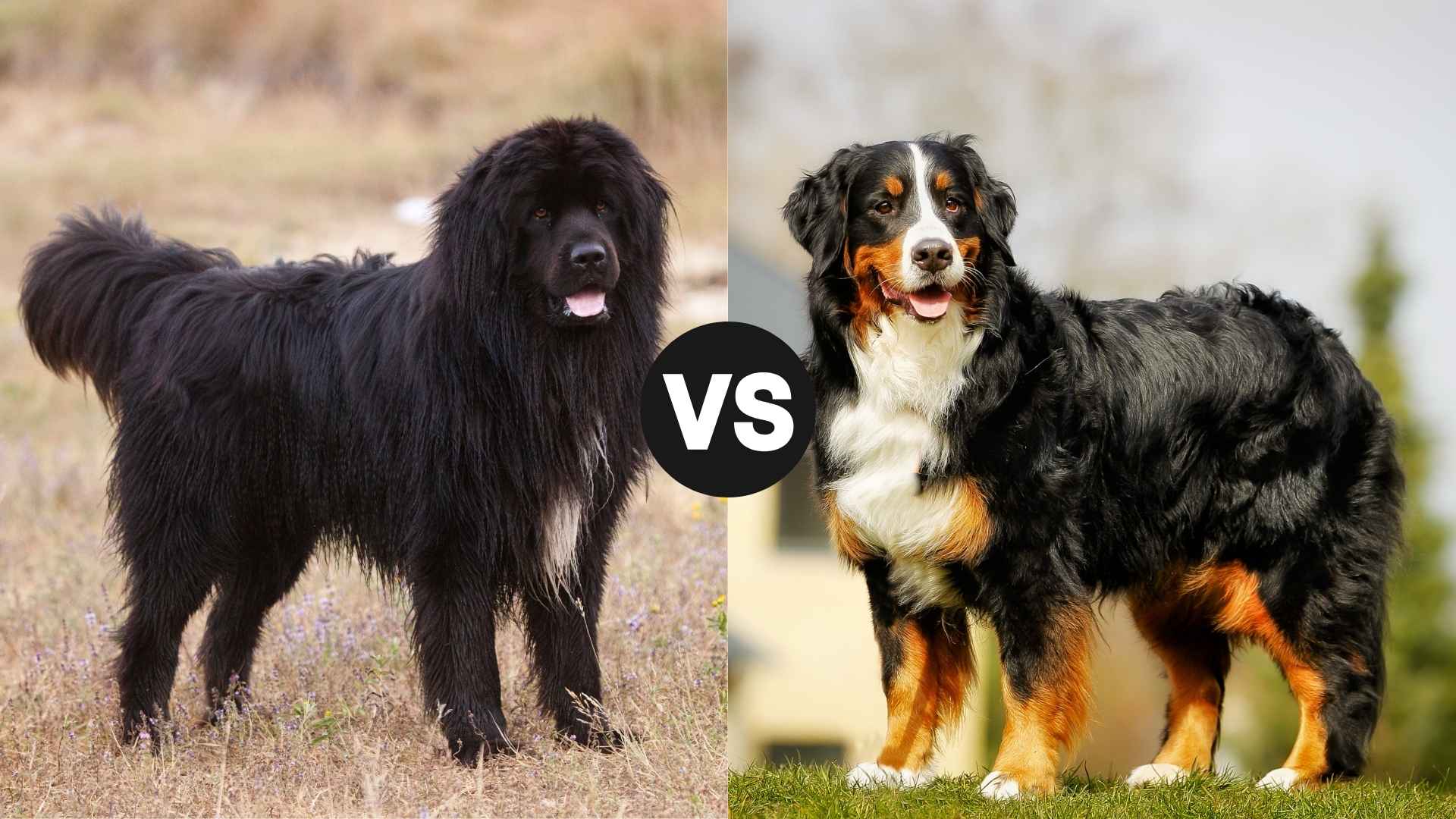Choosing between the Newfoundland and Bernese Mountain Dog isn’t as easy as flipping a coin. Both breeds are large, fluffy, and undeniably charming, but beyond their looks, each has a distinct personality, history, and care routine. For families looking to welcome a gentle giant into their lives, understanding the subtle and not-so-subtle differences between the two breeds is key.
On paper, the breeds share blue-collar resumes, unwavering devotion, and a propensity for forging deep human attachments. In practice, their preferences diverge: one dog leaps gleefully into frigid water, the other excels at hauling freight across snowy pastures. Factors such as stamina, grooming intensity, and breed-specific health liabilities all tip the scales in different directions.
Therefore, pausing for a thorough side-by-side analysis makes sense. A clear understanding of where these dogs overlap and where they sharply differ allows you to choose the companion whose daily rhythms align with yours. Let’s walk through the key differences (and similarities) in the Newfoundland vs Bernese Mountain Dog comparison, so you can pick the breed that truly fits your lifestyle.
Newfoundland vs. Bernese Mountain Dog
Both of these breeds are known for their loyalty and calm demeanor, making them ideal companions for families and outdoor enthusiasts. Whether you’re comparing coat care or energy levels, this in-depth look at Newfoundland vs Bernese Mountain Dog will help you determine which of these furry giants is better suited to your life, space, and energy.
Let’s break down every key difference, because when choosing between two dogs this magnificent, every detail matters.
Size and Weight Overview
Newfoundland – if size is your first consideration, the Newfoundland clearly dominates. These dogs are truly enormous. As the American Kennel Club (AKC) mentions, male Newfoundland dogs can weigh up to 150 pounds, and some tip the scale at even more. Their thick, water-resistant coats give them a bulky, bear-like look. Height-wise, they’re imposing without being towering.
Bernese Mountain Dog – These dogs aren’t exactly small. Adult males often weigh 80 to 120 pounds and have a more athletic frame. Though they may stand about the same height as Newfoundlands, they’re less dense overall.
So, when it comes to which is bigger, Newfoundland wins, paws down.
Temperament and Personality Traits
Newfoundland – Both breeds are affectionately dubbed “gentle giants,” but their temperaments reflect their origins. Newfoundlands are affectionate but in a slightly more relaxed way. Originally bred to work with Canadian fishermen, their easygoing disposition makes them great with kids and other pets. They’re calm and rarely display nervous or anxious behavior, even in noisy or unpredictable settings.
Bernese Mountain Dog – The Bernese Mountain Dog, a traditional farm dog, is loyal, loving, and prefers staying close to its humans. Berners tend to form deep bonds and often follow family members from room to room.
Trainability and Intelligence Levels
Bernese Mountain Dog – Trainability matters, especially with dogs this size. Bernese Mountain Dogs are intelligent but can be somewhat sensitive. Harsh corrections don’t sit well with them. Instead, they respond better to gentle encouragement and reward-based training. Early obedience work is a must.
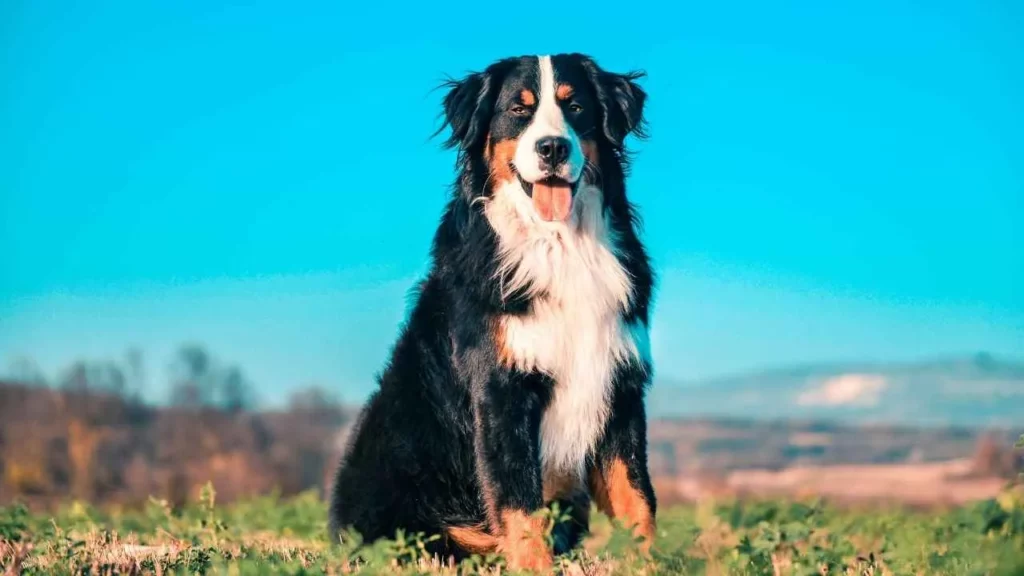
Newfoundland – These dogs are people pleasers with a strong work ethic. They were developed to haul nets, pull carts, and rescue people from the water, making them part of the water dog breeds. So, they’re naturally task-driven. These gentle giants are often easier to train consistently, thanks to their calm focus and tolerance for repetition.
Energy, Activity, and Playfulness
Bernese Mountain Dog – They tend to be more energetic. They love a good romp outside, enjoy long walks, and do well with dog sports if introduced early. Their boundless energy, especially when young, needs an outlet. If left unstimulated, Berners may become bored or destructive.
Newfoundland – They, by contrast, are all about calm activity. They still require exercise, no doubt about it, but they’re content with slow walks, swimming, and moderate playtime. If you’re an active family with a large yard or hiking goals, a Berner might keep up better. Prefer quiet strolls and a lakeside weekend? The Newfoundland shines there.
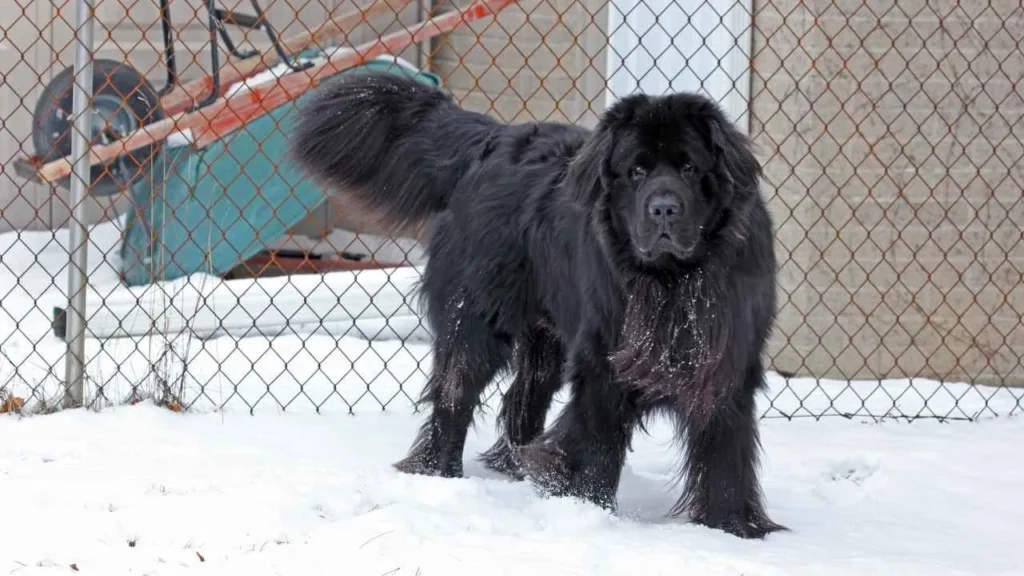
Bite Force and Jaw Structure
Bernese Mountain Dog – Despite their gentle eyes and amiable manners, they clamp down with surprising authority. Their bite force ranges between 200 and 400 PSI. One moment, a Berner is balancing a soft toy between its teeth; the next, those same jaws could steady a rolling hay cart if asked.
The breed’s bite force, while seldom directed at anything except work or play, is more than sufficient to command respect, and it requires early obedience drills to keep that power well-channeled.

Newfoundland – A Newfoundland’s mouth tells a different story. They have broad and square mouths, designed to anchor a rope in a gale. They have one of the strongest bite forces in the canine world, having more than 400 PSI. Picture waves crashing, a sailor overboard, and this dog diving without hesitation.
That wide muzzle locks onto fabric or flesh and simply refuses to let go until the rescue is complete. Its jaw strength evolved for utility rather than defense, making real aggression rare, but the physics remain formidable nevertheless.
Health Concerns and Lifespan
Bernese Mountain Dog – For the Bernese Mountain Dog, the clock ticks faster than any owner would like. As PetMD notes, their average lifespan is 7-10 years, and the chief thief of time is cancer; aggressive types such as histiocytic sarcoma strike the breed with heartbreaking frequency.
Orthopedic woes like elbow dysplasia and degenerative eye conditions layer on additional challenges. So, diligent screening, prompt veterinary follow-up, and genetically responsible breeding are absolutely non-negotiable.
Newfoundlands – They manage a slightly longer span, usually 9-10 years, yet their medical dossier is hardly light reading. Subvalvular aortic stenosis lurks as a silent cardiac threat. Hip dysplasia is a constant spectator for joints that bear tremendous weight, and bloat can develop without warning.
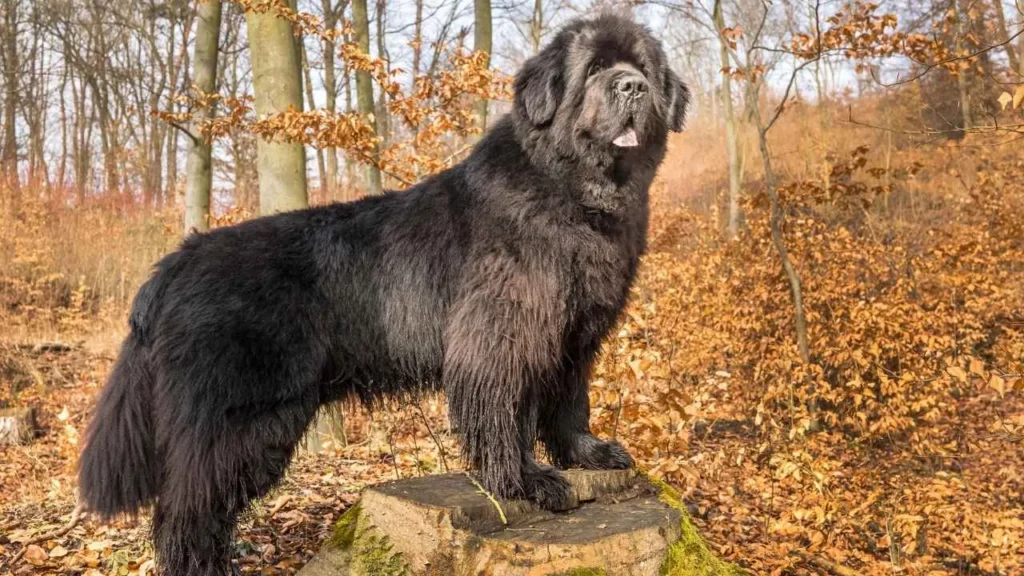
Owners who team up with cardiologists, orthopedic specialists, and sports-medicine veterinarians stack the odds in their gentle giant’s favor.
Nutritional Needs and Weight Management
Bernese Mountain Dog – Fueling a Bernese Mountain Dog resembles provisioning a marathon runner: high-quality protein for muscle repair, tightly calibrated calories to maintain lean mass, and joint-support additives such as glucosamine for cartilage that work overtime.
Because Berners sprint, hike, and haul sleds with gusto, under-feeding can deplete them, but even a modest surplus shows up fast on those sensitive elbows.
Newfoundland – A dog that tips the scales near or past 150 pounds demands substantial energy, yet its daily pace is typically unhurried. According to WebMD, Newfoundland dogs require a balanced diet just like us humans, including protein, carbohydrates, fats, vitamins, and minerals, in addition to plenty of water.
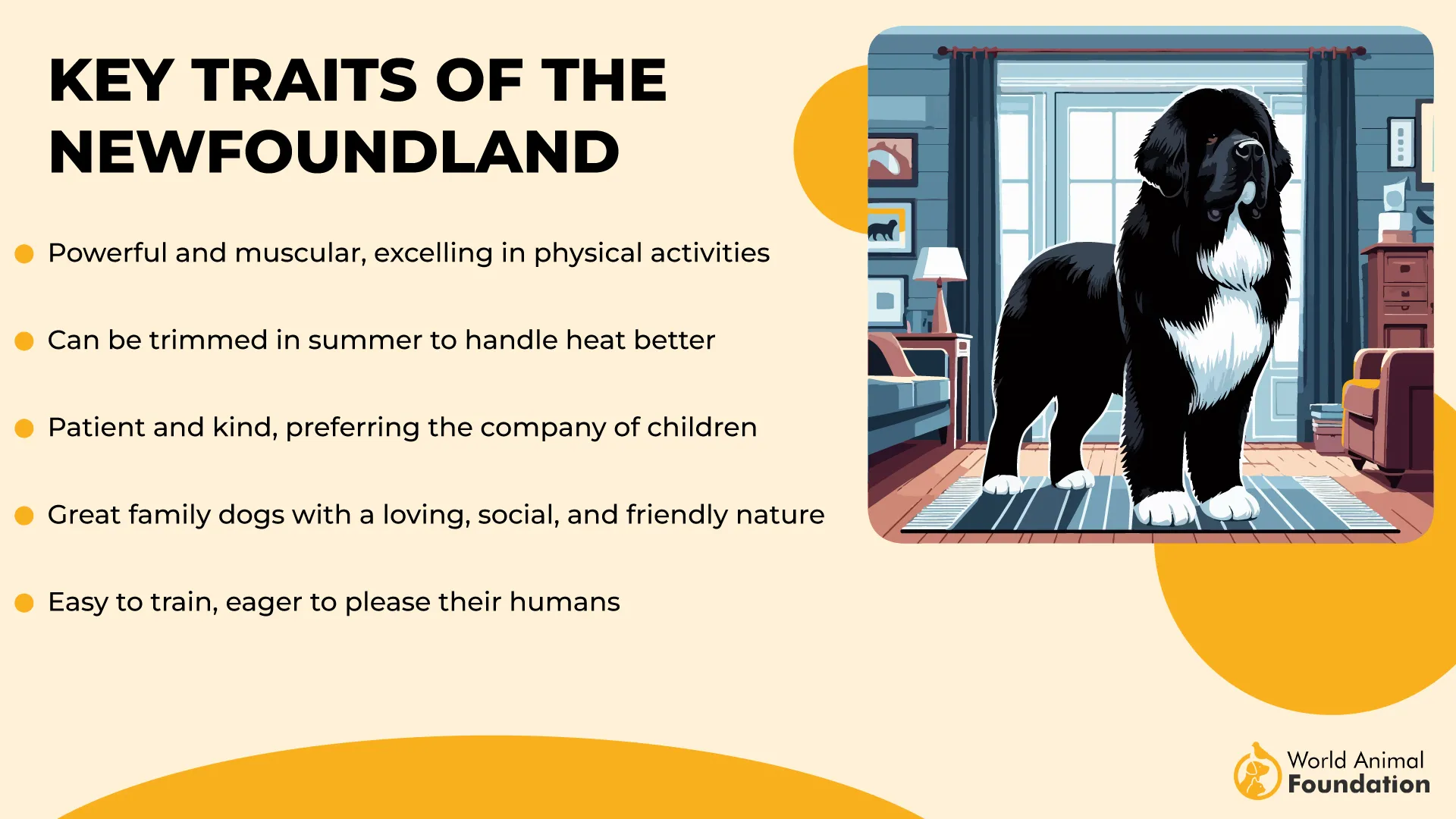
Slow-feed bowls, controlled treats, and marine-based omega oils help manage both appetite and heart health, while chondroitin fortifies joints already taxed by sheer mass.
Allergies, Coat Care, and Grooming Requirements
Bernese Mountain Dog – Bernese Mountain Dogs wear a lavish tri-color double coat that turns living rooms into snow globes every spring and fall. Daily brushing in shedding season, biweekly sessions the rest of the year, and an occasional de-shedding tool keep mats from colonizing behind the ears. Many owners swear by forced-air dryers after baths to blow out loose undercoat before it carpets the sofa.
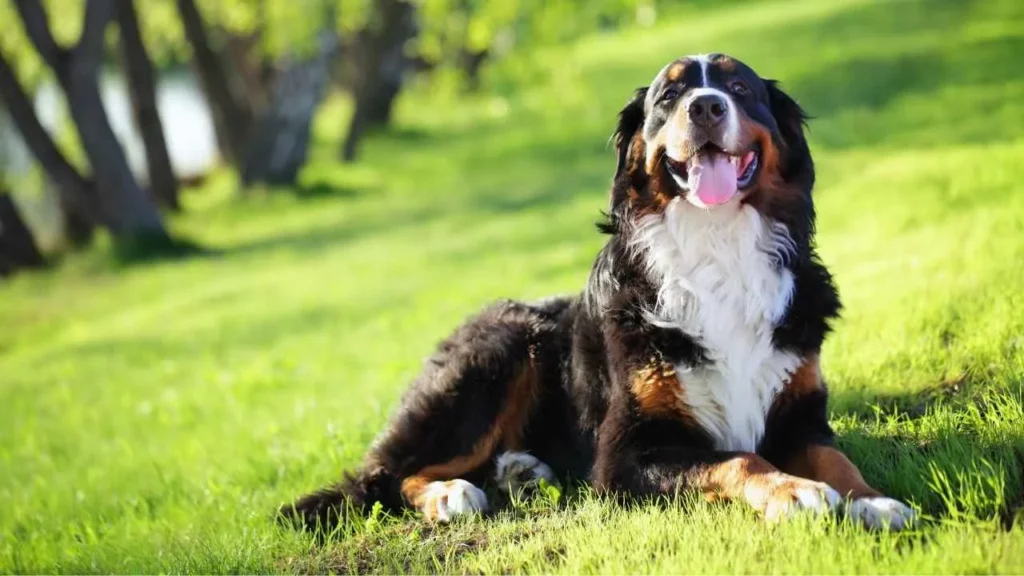
Newfoundland – A Newfoundland’s fur is equally dense yet carries an extra mandate: water-resistance. When that oily outer layer meets salt or late water, tangles form quickly around the neck ruff and rear feathers. Thorough comb-outs, strategic thinning of trouble spots, and regular baths with a coat-conditioning shampoo prevent matting. Add in a constant low-key drizzle of drool, and you’ll understand why many Newfie households keep absorbent towels at every doorway.
Conclusion
So, what’s the final say on the Newfoundland vs Bernese Mountain Dog debate?
Really, it hinges entirely upon what traits you desire in your four-legged friend.
Are you craving tranquility and a peaceful ambiance at home? A Newfoundland, with its calm demeanor and affinity for water, is genuinely unmatched. But perhaps adventure beckons you outdoors regularly. If so, a Bernese Mountain Dog eagerly waits to accompany you.
When it comes down to it, both breeds promise outstanding companionship, big in stature, but even more immense in affection. The perfect fit ultimately boils down to lifestyle compatibility, your grooming patience, available living space, and dedication to their daily care. Whichever path you choose, these dogs transcend ordinary pet status. They become lifelong friends brimming with loyalty, warmth, and treasured moments.


